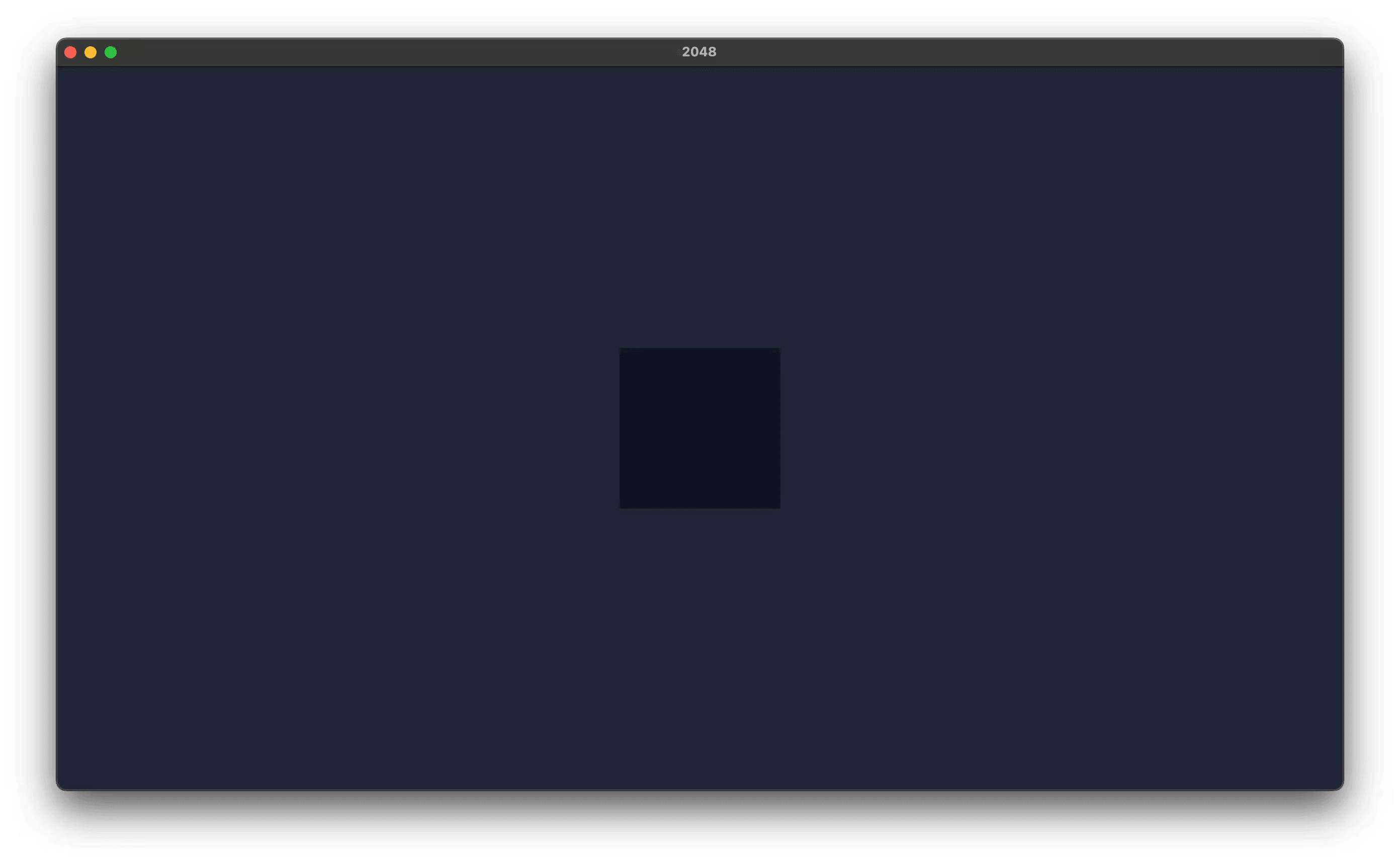With a fresh new coat of paint for the board we probably want to change the background as well.
Our camera is responsible for painting all of the pixels we see. Any area of the screen that doesn’t have a sprite on it will be painted using a “clear color”.
We can configure what the ClearColor is by using a Resource which will get accessed and used by Bevy’s rendering system.
A Resource is some data that isn’t associated with any entities or components.
fn main() {
App::new()
.insert_resource(ClearColor(
Color::hex("#1f2638").unwrap(),
))
.add_plugins(DefaultPlugins.set(WindowPlugin {
primary_window: Some(Window {
title: "2048".to_string(),
..default()
}),
..default()
}))
.add_startup_systems((setup, spawn_board))
.run()
}
This time we’ll use the hex function on Color to parse a hex code into a Color. Because this is parsing it could fail if we don’t give it a well formatted hex code, which is why the hex function returns a Result<Color, HexColorError>.
If we put in a hex code that doesn’t work we’d rather see our program crash in development, so we can .unwrap() the Result here, which will return the parsed Color for us.
We wrap the Color in the ClearColor struct so Bevy will find it when looking for the clear color, and insert it as a resource.
When we cargo run now, we see the board in the middle of a blueish background.

